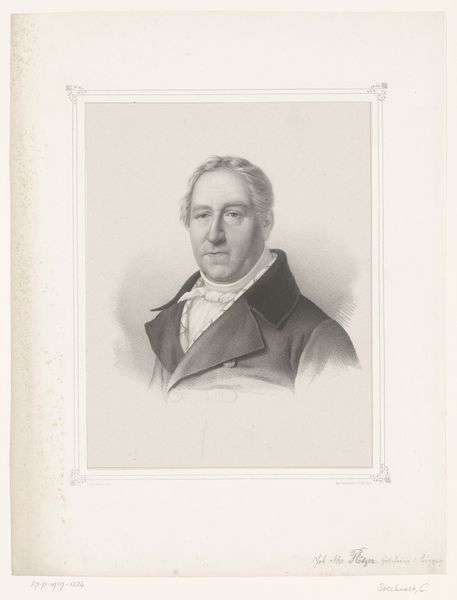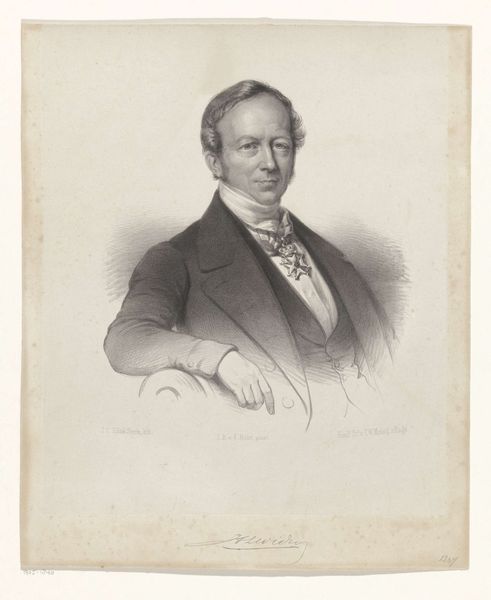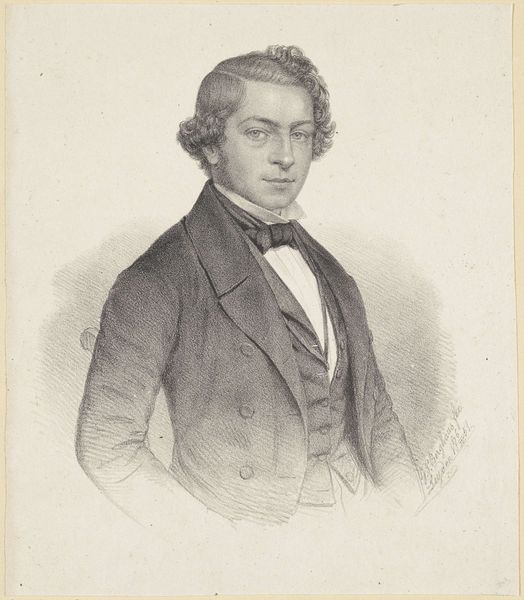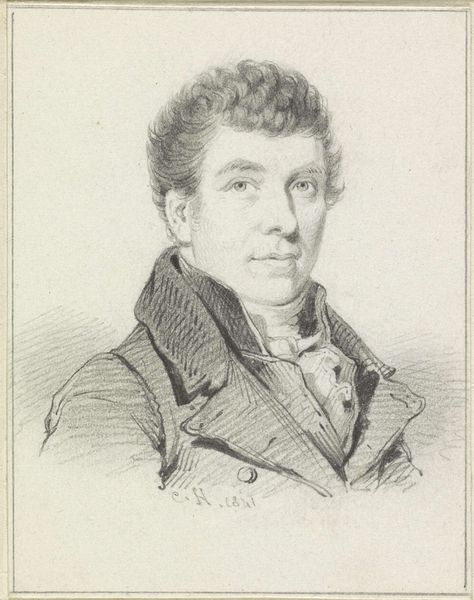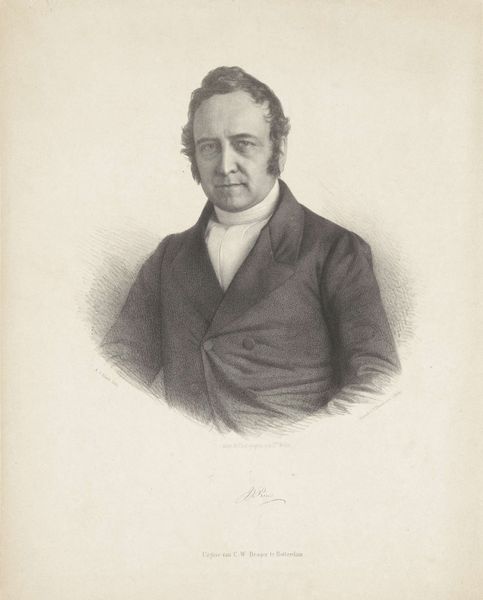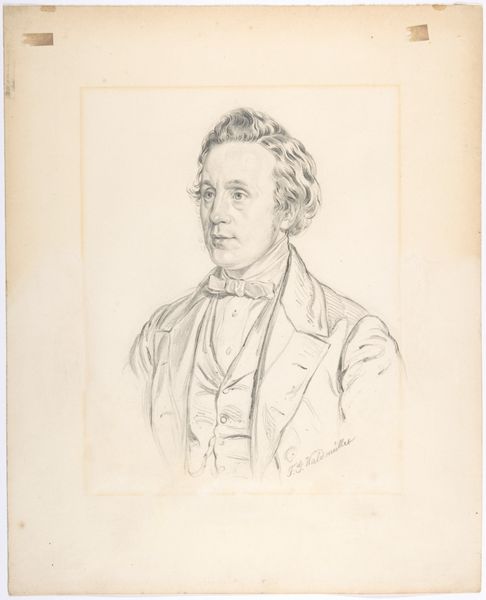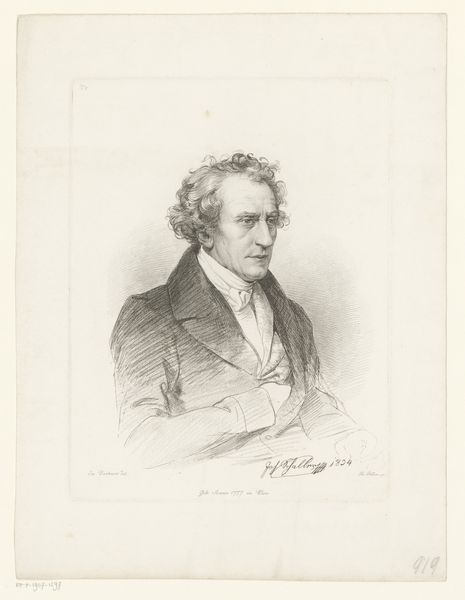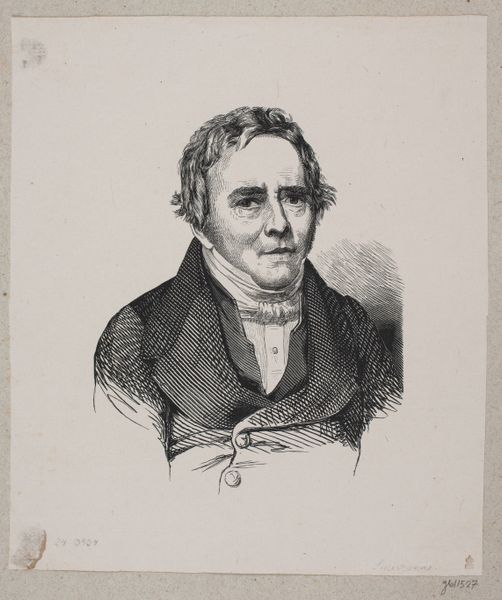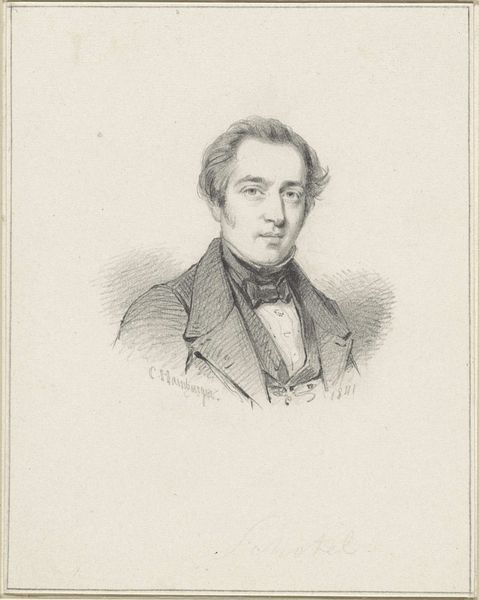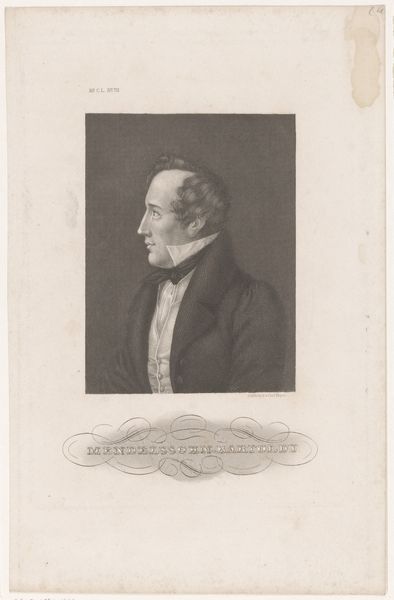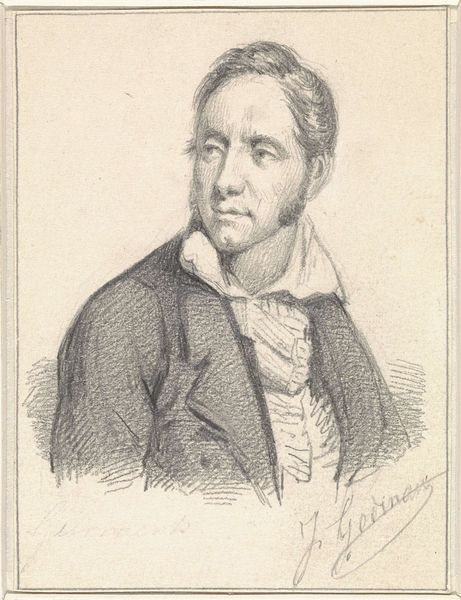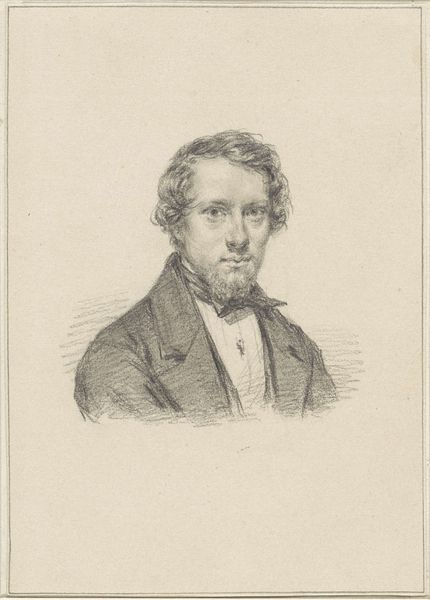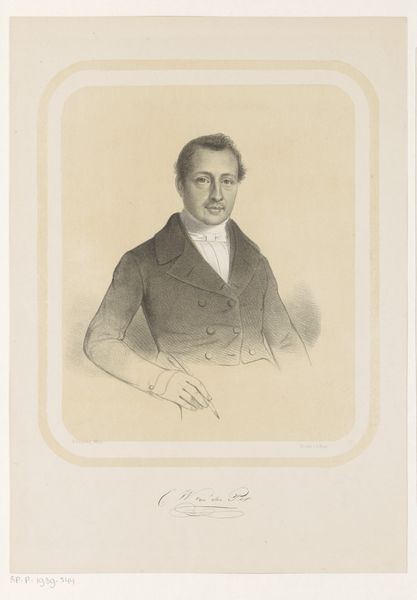
drawing, pencil
#
portrait
#
drawing
#
figuration
#
pencil drawing
#
romanticism
#
pencil
#
academic-art
Dimensions: height 167 mm, width 125 mm
Copyright: Rijks Museum: Open Domain
Editor: Here we have Jean-Baptiste Van der Hulst's self-portrait, rendered in pencil sometime between 1840 and 1842. It's quite striking, almost melancholic, don’t you think? What stands out to you in this drawing? Curator: The face is compelling, but it is his garment that speaks most eloquently of his place in society and artistic tradition. Think about the shapes suggested by its stark lines; the crisp lines mirror the subject’s refined social position, also present is a deeper symbol, do you see the continuity with older traditions? Editor: I do see he looks well attired! But, could you tell me what continuity you mean? Curator: Absolutely! In portraits of the era, a clear, unwavering gaze symbolized honesty and self-awareness, think of religious iconography. This piercing look connects Van der Hulst to a history of self-portrayal meant to reveal inner virtue, and integrity through external, social markers, not unlike a medieval altarpiece depicting saintly nobility. How does understanding that impact your view of this artwork? Editor: That gives it a totally different feel. I initially just saw it as a representation of a man but there's a statement of intent here too. A calculated projection of himself, his standing, and maybe even his legacy? Curator: Precisely. Consider the symbolic weight such pieces carried—not just for the sitter but also for society—and what that signifies. Editor: That’s fascinating! I will consider symbolic associations from now on. Thank you! Curator: Indeed! Remember to question, reflect, and see how layers of meaning influence the artwork and our cultural memory of it.
Comments
No comments
Be the first to comment and join the conversation on the ultimate creative platform.
